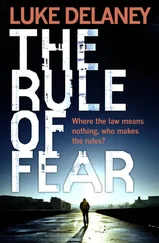We met where neither of us belonged, but where both of us felt at home: Ivy. For my part, I'd spent as many weekends there as I had at my own club. For hers, she was already one of Gil's favorites, months before bicker for her sophomore class began, and it was his first thought to introduce us.
Katie, he said, after getting both of us to the club on the same Saturday night, this is my roommate, Tom.
I gave a lazy smile, thinking I didn't have to flex much muscle to charm a sophomore.
Then she spoke. And like a fly in a pitcher plant, expecting nectar and finding death, I realized who was hunting who.
So you're Tom, she said, as if I met the description of a convict from a post office wall. Charlie told me about you.
The best part about being described to someone by Charlie is that things can only get better from there. Apparently he'd met Katie at Ivy several nights earlier, and when he realized that Gil intended to make the match, he eagerly chipped in with details.
What did he tell you? I asked, trying not to look concerned.
She thought for a second, searching for his exact words.
Something about astronomy. About stars.
White dwarf, I told her. It's a science joke.
Katie frowned.
I don't get it either, I admitted, trying to undo my first impression. I'm not much for that kind of stuff.
English major? she asked, as if she could tell.
I nodded. Gil had told me she was into philosophy.
She eyed me suspiciously. Who's your favorite author?
Impossible question. Who's your favorite philosopher?
Camus, she said, even though I meant it rhetorically. And my favorite author is H. A. Rey.
The words came out like a test. I'd never heard of Rey; he sounded like a modernist, a more obscure T.S.Eliot, an uppercase e. e. cummings.
He wrote poetry? I ventured, because I could imagine her reading Frenchmen by firelight.
Katie blinked. Then for the first time since we'd met, she smiled.
He wrote Curious George,'1'' she said, and laughed out loud when I tried not to blush.
That was the recipe of our relationship, I think. We gave each other what we never expected to find. In my earliest days at Princeton I had learned never to talk shop with my girlfriends; even poetry will kill romance, Gil had taught me, if you mistake it for conversation. But Katie had learned the same lesson, and neither of us liked it. Freshman year she dated a lacrosse player I'd met in one of my literature seminars. He was smart, taking to Pynchon and DeLillo in a way I never did, but he refused to speak a word about them outside of class. It drove her crazy, the lines he drew through his life, the walls he put up between work and play. In twenty minutes of conversation that night at Ivy, we both saw something we liked, a willingness to have no walls, or maybe just an unwillingness to keep them standing. It pleased Gil that he'd made such a good match. Before long I found myself waiting for the weekends, hoping to run into her between classes, thinking of her before bed, in the shower, in the middle of tests. Within a month, we were dating.
As the senior in our relationship, I imagined for a while that it was my job to apply the wisdom of my experience to everything we did. I made sure we kept to familiar places and friendly crowds, having learned from past girlfriends that familiarity always arrives in the wake of infatuation: two people who think they're in love can find out, when left alone, exactly how little they know about each other. So I insisted on public places-weekends at eating clubs, weeknights at the student center-and agreed to meet at bedrooms and library nooks only when I thought I detected something more in Katie's voice, the come-hither registers I flattered myself I could hear.
As usual, it was Katie who had to straighten me out.
Come on, she told me one night. We're going to dinner together.
Whose club? I asked.
A restaurant. Your choice.
We'd been together for less than two weeks; there were still too many parts of her I didn't know. A long dinner alone sounded risky.
Did you want to ask Karen or Trish to come along? I asked. Her two roommates in Holder had been fail-safe company. Trish, in particular, who never seemed to eat, dependably talked through any meal.
Katie's back was turned to me. We could ask Gil to come too, she said.
Sure. It struck me as an odd combination, but there was safety in numbers.
What about Charlie? she asked. He's always hungry.
Finally I realized she was being sarcastic.
What's the problem, Tom? she said, turning back to me. You're afraid other people will see us alone?
No.
I bore you?
Of course not.
Then what? You think we'll find out we don't know each other very well?
I hesitated. Yes.
Katie seemed amazed that I meant it.
What's my sister's name? she said finally.
I don't know.
Am I religious?
I'm not sure.
Do I steal money from the tip jar at the coffee shop when I'm short on change?
Probably.
Katie leaned in, smiling. There. You survived.
I'd never been with someone who was so confident about getting to know me. She never seemed to doubt the pieces would fit. Now let's go to dinner, she said, pulling me by the hand. We never looked back.
Eight days after my dream about the satyr, Paul came to me with news. I was right, he said proudly. Parts of the book are written in cipher.
How'd you figure it out?
Cornuta — the word Terome used to give Moses horns-is the answer Francesco wanted. But most of the normal techniques for using a word as a cipher don't work in the Hypnerotomachia . Look…
He showed me a sheet of paper he'd prepared, with two lines of letters running parallel to each other.

Here's a very basic cipher alphabet, he said. The top row is what you call the plaintext, the bottom row is the ciphertext. Notice how the ciphertext begins with our keyword, cornuta ? After that, it's just a regular alphabet, with the letters from cornuta removed so they don't get duplicated.
How does it work?
Paul picked up a pencil from his desk and began circling letters. Say you wanted to write 'hello' using this cornuta cipher. You would start with the plaintext alphabet on top and find 'H', then look at its equivalent in ciphertext below it. In this case, 'H' corresponds to 'B.' You do that with the rest of the letters, and 'hello' becomes ' buggj. '
That's how Colonna used cornuta ?
No. By the fifteenth and sixteenth centuries, Italian courts had much more sophisticated systems. Alberti, who wrote the architecture treatise I showed you last week, also invented polyalphabetic cryptography. The cipher alphabet changes every few letters. It's much harder.
I point to his sheet of paper. But Colonna couldn't have used anything like that. It just makes gibberish. The whole book would be full of words like ' buggj. '
Paul's eyes lit up. Exactly. Complex encipherment methods don't produce readable text. But the Hypnerotomachia is different. Its ciphertext still reads like a book.
So Colonna used the riddles instead of a cipher.
He nodded. It's called steganography. Like writing a message in invisible ink: the idea is that nobody knows it's there. Francesco combined cryptography and steganography. He hid riddles inside a normal-sounding story, where they wouldn't stand out. Then he used the riddles to create deciphering techniques, to make it harder to understand his message. In this case, all you have to do is count the number of letters in cornuta , which is seven, then string together every seventh letter in the text. It's not that different from using the first word of every chapter. Just a matter of knowing the right intervals.
Читать дальше













